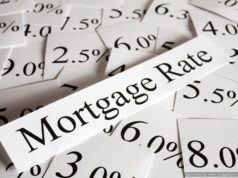 What is a Capital Asset?
What is a Capital Asset?
In finance, the term ‘Capital Asset’ refers to any type of asset that is purchased or used to generate a profit. As a result of this definition, capital assets differ from normal assets which are typically used for consumption or personal enjoyment.
The distinction between a capital asset and an asset used for personal enjoyment is fundamental in developing and analyzing the pricing model of a particular good. Often times, individuals will disagree concerning the value of personal assets; the owner of a particular sports car may believe the value of the asset is higher than an individual who owns an SUV. This example, which refers to assets used for personal enjoyment or consumption, is distinctly separate from capital assets, where taste or personal preference is not factored into the true value of the asset. The only difference of opinion that is tied into a capital asset is found in an evaluation of the asset’s potential to produce a profit in the future.
All capital assets are forms of tangible assets that are typically held by investors for an extended period. The most common forms of capital assets are: land, buildings, residential dwellings, construction equipment, manufacturing plants, and antique or rare automobiles.
In addition to investments, machinery or construction equipment is common forms of capital asset. Any type of equipment that is used in the operation of a business or used to develop a piece of land will be regarded as a capital asset. Additionally, delivery vehicles also qualify as capital assets, since they are used to transport finished goods to the point of sale. Other forms of capital assets that are used to run or improve a business include: office furniture, computer equipment, and other forms of office machinery.
Capital assets are subjected to a specific set of tax rules imposed by both federal and state governments. Regulations regarding capital gains and capital losses are applied to any resource that is defined or regarded as a capital asset. Tax laws regarding capital assets enable investors or business owners to gain tax credits on aging equipment or other forms of capital assets; capital assets typically become less valuable through depreciation over time.
Capital Asset Pricing Model
The capital asset pricing model is a financial evaluation technique used to determine a theoretically appropriate rate of return on a capital asset. The capital asset pricing model is placed on capital assets that are kept in a well-diversified portfolio to mitigate the asset’s non-diversifiable risk.
The capital asset pricing model takes into account the underlying asset’s sensitivity to a systematic or market risk, typically presented by the quantity beta in the macro economy, as well as the expected realized profit of the market and the expected return of the theoretically risk-free capital asset.
The Capital Pricing Model is used to diminish the differing opinions that result from investor’s beliefs on the expected rate of return on a capital asset. The capital asset pricing model aims to provide a uniform evaluation and chart standard returns for an assortment of capital assets in a variety of sectors or markets.

































